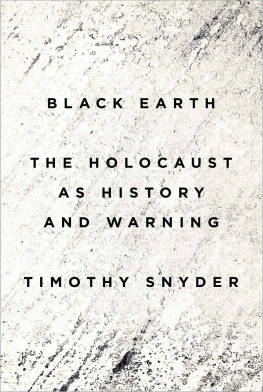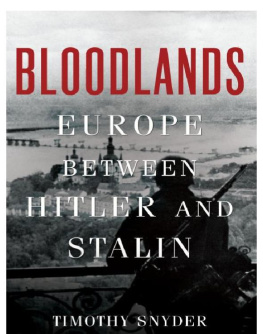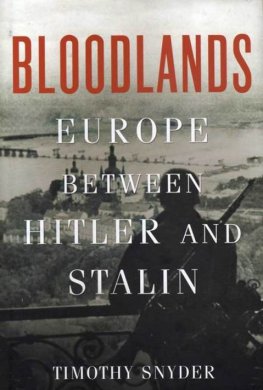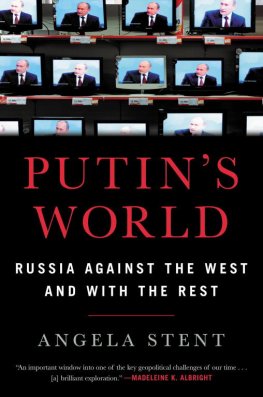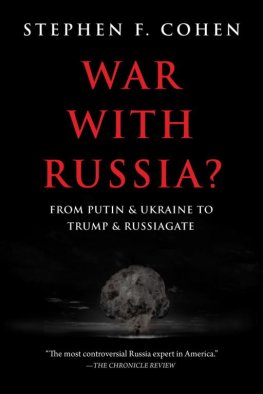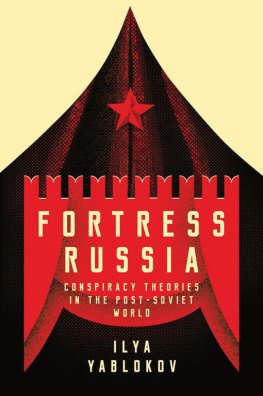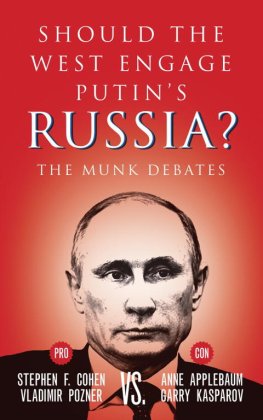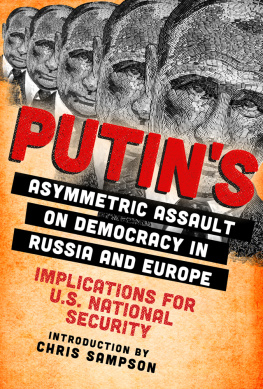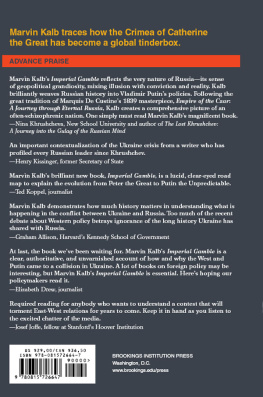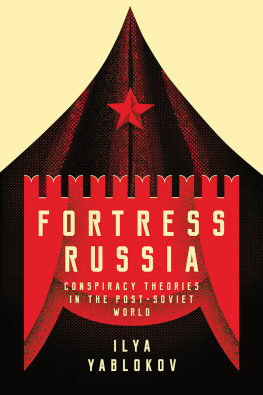All rights reserved.
Published in the United States by Tim Duggan Books, an imprint of the Crown Publishing Group, a division of Penguin Random House LLC, New York.
TIM DUGGAN BOOKS and the Crown colophon are trademarks of Penguin Random House LLC.
Library of Congress Cataloging-in-Publication Data is available upon request.
: photo of Vladimir Ilyich Lenin c. 1917: Universal History Archive/Getty Images; (right) photo of Ivan Alexandrovich Ilyin c. 1920: Fine Art Images/Heritage Images/Getty Images
: Paul Celan, Mohn und Gedchtnis 1952, Deutsche Verlags-Anstalt, Mnchen, in der Verlagsgruppe Random House GmbH
PROLOGUE (2010)
My son was born in Vienna. It was a difficult delivery, and the first concern of the Austrian obstetrician and the Polish midwife was the baby. He breathed, his mother held him for a moment, and then she was wheeled to an operating room. The midwife, Ewa, handed him to me. My son and I were a bit lost in what happened next, but we stuck together. He was looking upward with unfocused violet eyes as the surgeons ran past us at a dead sprint, footfalls and snaps of masks, a blur of green scrubs.
The next day all seemed well. The nurses instructed me to depart the ward at the normal time, five oclock in the afternoon, leaving mother and child in their care until the morning. I could now, a little belatedly, send out a birth announcement by email. Some friends read the good news at the same moment that they learned of a catastrophe that took the lives of others. One friend, a fellow scholar whom I had met in Vienna in a different century, had rushed to board an airplane in Warsaw. My message went out at the speed of light, but it never caught up to him.
The year 2010 was a time of reflection. A financial crisis two years before had eliminated much of the worlds wealth, and a halting recovery was favoring the rich. An African American was president of the United States. The great adventure of Europe in the 2000s, the enlargement of the European Union to the east, seemed complete. A decade into the twenty-first century, two decades away from the end of communism in Europe, seven decades after the beginning of the Second World War, 2010 seemed like a year for reckonings.
I was working on one that year with a historian in his time of dying. I admired Tony Judt most for his history of Europe, Postwar, published in 2005. It recounted the improbable success of the European Union in assembling imperial fragments into the worlds largest economy and most important zone of democracy. The book had concluded with a meditation on the memory of the Holocaust of the Jews of Europe. In the twenty-first century, he suggested, procedures and money would not be enough: political decency would require a history of horror.
In 2008, Tony had fallen ill with amyotrophic lateral sclerosis (ALS), a degenerative neurological disorder. He was certain to die, trapped in a body that would not serve his mind. After Tony lost the use of his hands, we began recording conversations on themes from the twentieth century. We were both worried, as we spoke in 2009, by the American assumptions that capitalism was unalterable and democracy inevitable. Tony had written of the irresponsible intellectuals who aided totalitarianism in the twentieth century. He was now concerned about a new irresponsibility in the twenty-first: a total rejection of ideas that flattened discussion, disabled policy, and normalized inequality.
As he and I spoke, I was writing a history of the political mass murders committed by Nazi Germany and the Soviet Union in the Europe of the 1930s and 1940s. It began with people and their homes, in particular the Jews, Belarusians, Ukrainians, Russians, Balts, and Poles who had experienced both regimes in the places where Nazi and Soviet power overlapped. Although the books chapters were grimplanned starvations, death pits, gas chambersits premise was optimistic: the causes of mass murder could be ascertained, the words of the dead recalled. The truth could be told, and lessons could be learned.
A chapter of that book was devoted to a turning point of the twentieth century: the Nazi-Soviet alliance that began the Second World War in Europe. In September 1939, Nazi Germany and the Soviet Union both invaded Poland, each with the goal of destroying the Polish state and the Polish political class. In April 1940, the Soviet secret police murdered 21,892 Polish prisoners of war, most of them educated reserve officers. The men (and one woman) were shot in the back of the head at five killing sites, one of them the Katyn Forest, near Smolensk in the Russian republic of the Soviet Union. For Poles, the Katyn massacre came to stand for Soviet repression generally.
After the Second World War, Poland was a communist regime and a Soviet satellite, so Katyn could not be discussed. Only after the dissolution of the Soviet Union in 1991 could historians clarify what had happened. Soviet documents left no doubt that the mass murder had been deliberate policy, personally approved by Joseph Stalin. Since the end of the Soviet Union, the new Russian Federation had been struggling to address the legacy of Stalinist terror. On February 3, 2010, as I was finishing my book, the Russian prime minister made a surprising proposal to his Polish counterpart: a joint commemoration of Katyn that April, on the seventieth anniversary of the crime. At midnight on the first of April, the day my son was due to be born, I sent my book to the publisher. On the seventh of April a Polish governmental delegation, led by the Polish prime minister, arrived in Russia. The next day my wife gave birth.
Two days after that, a second Polish delegation set out for Russia. It included the Polish president and his wife, commanders of the Polish armed forces, parliamentary deputies, civic activists, priests, and family members of those murdered at Katyn in 1940. One of its members was my friend Tomek Merta, an admired political theoristand the vice minister of culture responsible for commemoration. Early in the morning of Saturday, April 10, 2010, Tomek boarded an airplane. It crashed at 8:41 a.m., short of a landing strip at the Russian military airfield at Smolensk. There were no survivors. In a maternity ward in Vienna a cell phone rang, and a new mother shouted in Polish across the room.
The next evening, I read the responses to my birth announcement. One friend was concerned that I understand the tragedy amidst my own joy: So that you dont find yourself in a difficult situation, I have to tell you that Tomek Merta was killed. Another friend, whose name was on the passenger list, wrote to say that he had changed his mind and stayed home. His wife was due to give birth a few weeks later.
He signed off: Henceforth everything will be different.
In Austrian maternity wards, mothers stay for four days, so that nurses can teach about feeding, bathing, and care. This is long enough for families to become acquainted, for parents to learn what languages they share, for conversations to begin. The following day in the maternity ward the talk in Polish was of conspiracy. Rumors had taken shape: the Russians had shot down the airplane; the Polish government had been in on the plot to kill the Polish president, who was of a different party than the prime minister. A new Polish mother asked me what I thought. I said that this was all very unlikely.


